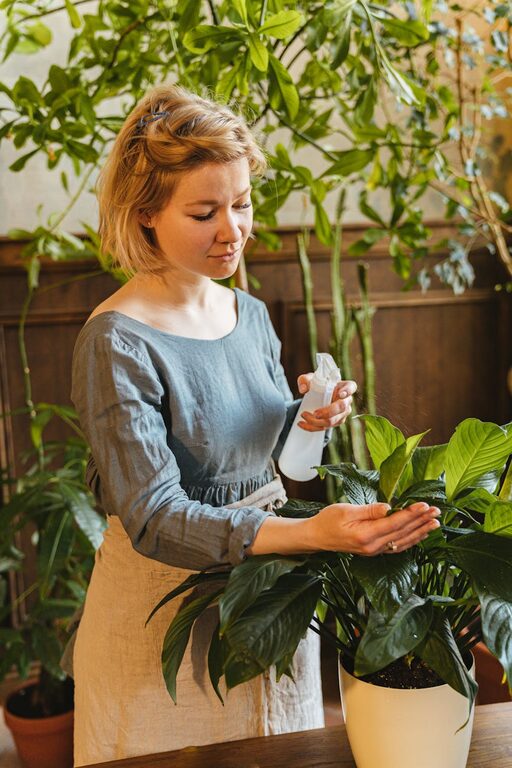Bringing houseplants into your home can brighten up any space and improve air quality, but keeping them healthy requires some attention and care. Whether you’re a seasoned plant parent or just starting out, understanding the basics of plant care is key to ensuring your green companions thrive. Here are practical tips to help your houseplants stay vibrant and grow strong.
Understanding Your Plant’s Needs
Every houseplant species has unique requirements, so learning about your specific plants is the first step toward success. Factors like light, water, soil type, and humidity vary widely between plants.
Light Requirements
Plants rely on sunlight for photosynthesis, but not all plants prefer the same amount. Here are some general guidelines:
– Bright light: Succulents and cacti need plenty of direct sunlight.
– Medium light: Many tropical plants, like snake plants and pothos, thrive in indirect but bright light.
– Low light: Some plants, such as ZZ plants and peace lilies, can tolerate lower light conditions but still need some natural light.
To determine if your plant is getting the right amount, observe its growth. Pale leaves or leggy stems may indicate insufficient light, while scorched or brown leaf edges can signal too much direct sun.
Watering Wisely
Proper watering is one of the most common challenges in plant care. Overwatering or underwatering can stress your plants and lead to issues like root rot or wilting.
How to Water Correctly
– Check the soil: Before watering, stick your finger about an inch into the soil. If it feels dry, it’s time to water; if still moist, wait a few more days.
– Water thoroughly: When watering, soak the soil until water runs out of the drainage holes. This ensures the entire root ball receives moisture.
– Avoid standing water: Empty saucers under pots to prevent roots from sitting in water, which can cause root rot.
Signs of Overwatering and Underwatering
– Overwatering: Yellowing leaves, soft stems, moldy soil.
– Underwatering: Drooping leaves, dry soil, crispy leaf edges.
Choosing the Right Pot and Soil
The right container and soil mix help roots grow and allow water to drain efficiently.
Pot Selection
– Use pots with drainage holes to prevent water accumulation.
– Match pot size to plant size; too large can lead to soggy soil, too small can restrict root growth.
– Consider breathable materials like terracotta to enhance air circulation.
Soil Types
– Use well-draining potting mixes suitable for your plant type.
– Succulents and cacti prefer sandy, gritty soil.
– Tropical plants need peat-based soils that hold moisture but don’t stay soggy.
Fertilizing Your Plants
Plants need nutrients to grow, especially during active growing seasons.
– Use a balanced, water-soluble fertilizer every 4-6 weeks during spring and summer.
– Reduce feeding in fall and winter when most plants enter dormancy.
– Follow instructions carefully — too much fertilizer can harm roots.
Managing Humidity and Temperature
Most houseplants originate from tropical or temperate climates and prefer stable environments.
– Keep plants away from drafts, heaters, and air conditioners that cause temperature fluctuations.
– Increase humidity by misting leaves, grouping plants together, or using a humidifier.
– Aim for room temperatures between 65°F and 75°F (18°C-24°C), though some plants have specific needs.
Pruning and Cleaning
Regular grooming helps plants stay healthy and attractive.
– Remove dead or yellowing leaves to prevent disease and improve appearance.
– Pinch back leggy growth to encourage bushier plants.
– Clean leaves gently with a damp cloth to remove dust and improve photosynthesis.
Preventing and Treating Pests
Indoor plants can attract pests like spider mites, aphids, and mealybugs.
– Inspect plants regularly for signs of pests — sticky residue, webbing, or discolored spots.
– Isolate new plants before introducing them to your collection.
– Use natural treatments like neem oil or insecticidal soap as needed.
Creating a Routine
Consistency is vital to plant care success.
– Set regular times to water, check humidity, and inspect plants.
– Keep notes on your plant’s progress and adjust care accordingly.
– Don’t be discouraged if a plant struggles; learning from mistakes helps you improve.
—
With patience and these simple tips, your houseplants can flourish and fill your home with natural beauty. Enjoy the process of nurturing your plants and watch your indoor garden grow greener every day!

